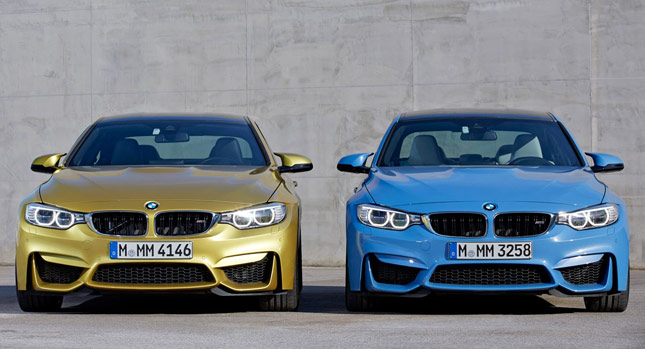BMW’s M division says its current philosophy is reducing the weight of its cars rather than adding more power in order to obtain high performance vehicles.
“We want to be in a different league for power-to-weight, but we prefer to have a car that weighs 1,000kg rather than one with 1,000 horsepower,” says Carsten Pries, the head of BMW M product management.
The new BMW M3 and M4 reflect the company’s strategy focused on weight reduction. While they are more powerful than the models they replace, the increase is only 3 percent, from 416hp to 427hp. However, they are up to 80 kg (176 lbs) lighter, or 6 percent.
Along with the downsized 3.0-liter twin-turbocharged 3.0-liter six-cylinder engine, the weight reduction helps to reduce fuel consumption and CO2 emissions by 28 percent, potentially offering an additional 100 miles (161 km) of driving range on a full tank of fuel.
To make the cars lighter, the front end of both models is now almost exclusively made from aluminum, while magnesium and carbon fiber are also used in the structure and drivetrain. As for the possible addition of an xDrive all-wheel drive system, Carsten Pries puts it simply: “What is the point of taking out 80kg if you are going to put 75kg back through xDrive?”. However, he says an M model with xDrive (not including the X5 M and X6 M here) will arrive in the future.
BMW M sold 31,300 vehicles worldwide in 2013, around 40 percent of which were sold in the U.S. The UK took second spot ahead of the company’s home market, Germany. Sales of M Performance vehicles totaled 41,200 vehicles. BMW expects to sell around 5,000 M3 and M4 cars over their lifetime, with a peak of 1,200 units expected next year.
By Dan Mihalascu
PHOTO GALLERY








